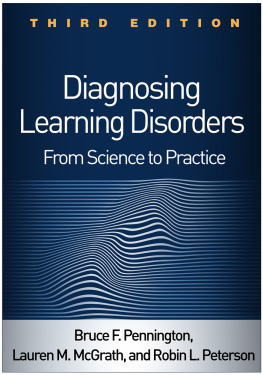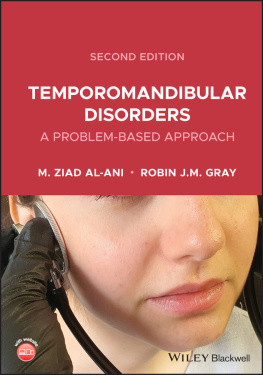
This book is printed on acid-free paper. 
Copyright 2014 by John Wiley & Sons, Inc. All rights reserved.
Published by John Wiley & Sons, Inc., Hoboken, New Jersey.
Published simultaneously in Canada.
No part of this publication may be reproduced, stored in a retrieval system, or transmitted in any form or by any means, electronic, mechanical, photocopying, recording, scanning, or otherwise, except as permitted under Section 107 or 108 of the 1976 United States Copyright Act, without either the prior written permission of the Publisher, or authorization through payment of the appropriate per-copy fee to the Copyright Clearance Center, Inc., 222 Rosewood Drive, Danvers, MA 01923, (978) 750-8400, fax (978) 646-8600, or on the web at www.copyright.com. Requests to the Publisher for permission should be addressed to the Permissions Department, John Wiley & Sons, Inc., 111 River Street, Hoboken, NJ 07030, (201) 748-6011, fax (201) 748-6008.
Limit of Liability/Disclaimer of Warranty: While the publisher and author have used their best efforts in preparing this book, they make no representations or warranties with respect to the accuracy or completeness of the contents of this book and specifically disclaim any implied warranties of merchantability or fitness for a particular purpose. No warranty may be created or extended by sales representatives or written sales materials. The advice and strategies contained herein may not be suitable for your situation. You should consult with a professional where appropriate. Neither the publisher nor author shall be liable for any loss of profit or any other commercial damages, including but not limited to special, incidental, consequential, or other damages.
This publication is designed to provide accurate and authoritative information in regard to the subject matter covered. It is sold with the understanding that the publisher is not engaged in rendering professional services. If legal, accounting, medical, psychological or any other expert assistance is required, the services of a competent professional person should be sought.
The contents of this work are intended to further general scientific research, understanding, and discussion only and are not intended and should not be relied upon as recommending or promoting a specific method, diagnosis, or treatment by physicians for any particular patient. The publisher and the author make no representations or warranties with respect to the accuracy or completeness of the contents of this work and specifically disclaim all warranties, including without limitation any implied warranties of fitness for a particular purpose. In view of ongoing research, equipment modifications, changes in governmental regulations, and the constant flow of information relating to the use of medicines, equipment, and devices, the reader is urged to review and evaluate the information provided in the package insert or instructions for each medicine, equipment, or device for, among other things, any changes in the instructions or indication of usage and for added warnings and precautions. Readers should consult with a specialist where appropriate. The fact that an organization or Website is referred to in this work as a citation and/or a potential source of further information does not mean that the author or the publisher endorses the information the organization or Website may provide or recommendations it may make. Further, readers should be aware that Internet Websites listed in this work may have changed or disappeared between when this work was written and when it is read. No warranty may be created or extended by any promotional statements for this work. Neither the publisher nor the author shall be liable for any damages arising herefrom.
Designations used by companies to distinguish their products are often claimed as trademarks. In all instances where John Wiley & Sons, Inc. is aware of a claim, the product names appear in initial capital or all capital letters. Readers, however, should contact the appropriate companies for more complete information regarding trademarks and registration.
For general information on our other products and services please contact our Customer Care Department within the U.S. at (800) 762-2974, outside the United States at (317) 572-3993 or fax (317) 572-4002.
Wiley also publishes its books in a variety of electronic formats. Some content that appears in print may not be available in electronic books. For more information about Wiley products, visit our website at www.wiley.com.
ISBN 978-1-118-65708-9
Preface
This is the seventh edition of Adult Psychopathology and Diagnosis and the second that does not bear Samuel M. Turner's name due to his untimely passing. His spirit is here, however, and we again dedicate this volume to him.
Since publication of the previous edition, the DSM-5 has been released and new data continue to emerge that force us to continuously reconsider how we approach and conceptualize psychological disorders. Psychopathology is a vibrant field and continuing discoveries regarding the roles of genetics, neurobiology, and behavior require that we continue to update this volume for students and professionals alike. We believe that our eminent authors have captured both major changes and more nuanced findings in their respective chapters.
The seventh edition contains 20 chapters divided into two parts (Part I: Overview; Part II: Specific Disorders). Part I has four chapters by experts in the field: : Impact of Race, Ethnicity, and Culture on the Expression and Assessment of Psychopathology.
Part II on Specific Disorders includes 16 chapters that cover many of the diagnostic entities and problems seen in daily clinical work by our colleagues in hospitals, clinics, and private practice. Approximately 30% of the chapters have new authors for this edition. Additionally, as a testament to the vibrancy of the field of psychopathology, the original anxiety disorders chapter has now been split into three chapters (: Trauma and Stress-Related Disorders: Posttraumatic Stress Disorder, Acute Stress Disorder, and Adjustment Disorders) in order to adequately address the extensive work in these areas and changes in DSM-5.
To the extent possible, we have asked our gracious contributors to follow a standard format. Exceptions, of course, were granted as dictated by the data inherent in each chapter. Generally, however, each chapter has a description of the disorder, a case study, and material documenting epidemiology, clinical picture, course and prognosis, diagnostic considerations, psychological and biological assessment, and etiological considerations. Each chapter also contains a summary.
Many individuals have contributed to the seventh edition of this book. First, we thank our experts, who agreed to share their vast knowledge about their areas of study. And as always, we thank Patricia Rossi and her exceptionally professional staff at John Wiley & Sons, for understanding the importance of this area in clinical psychology.
Deborah C. Beidel, Orlando, Florida
B. Christopher Frueh, Hilo, Hawaii
Michel Hersen, Hillsboro, Oregon
Contributors
Michelle Accardi
Department of Psychology
Binghamton University (SUNY)
Binghamton, NY
Candice A. Alfano, PhD
Department of Psychology
University of Houston
Houston, TX
Gordon J. G. Asmundson, PhD
Department of Psychology
University of Regina
Regina, Saskatchewan, Canada
Evelyn Behar, PhD
Next page












